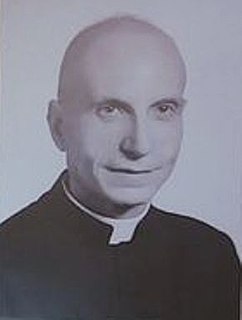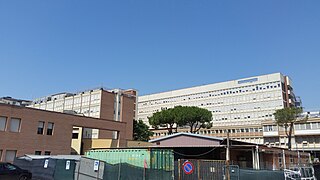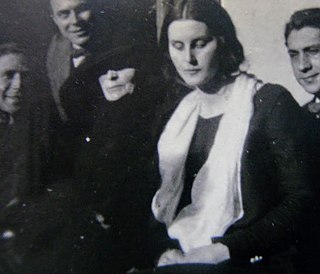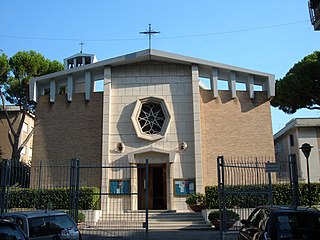
Alcamo is the fourth-largest town and commune of the Province of Trapani, Sicily, with a population of 44.925 inhabitants. It is on the borderline with the Metropolitan City of Palermo at a distance of about 50 kilometres from Palermo and Trapani.

Christ Falling on the Way to Calvary, also known as Lo Spasimo or Il Spasimo di Sicilia, is a painting by the Italian High Renaissance painter Raphael, of c. 1514–16, now in the Museo del Prado in Madrid. It is an important work for the development of his style.
Giovanni Ventura Borghesi was an Italian painter of the Baroque period, active mainly in Rome.

The Ospedale degli Incurabili or Complesso degli Incurabili is an ancient and prominent hospital complex located on Via Maria Longo in central Naples, Italy. Part of the complex, including the remarkable pharmacy, are now the Museo delle arti sanitarie of Naples.

Rocchette di Fazio is a village in Tuscany, central Italy, administratively a frazione of the comune of Semproniano, province of Grosseto. At the time of the 2001 census its population amounted to 19.

Palazzo Natoli is a Baroque palace in Palermo, in the Mediterranean island of Sicily. It was built by Vincenzo Natoli in 1765. It has a fine entrance on via S. Salvatore, and frescoes by Gioacchino Martorana.

Palermo, main city of Sicily, has a big heritage of churches which ranges from the Arab-Norman-Byzantine style to the Gothic and the Baroque styles. In particular, the list includes the most important churches of the historic centre divided by the four areas of Kalsa, Albergaria, Seralcadi and Loggia.
Francesco Maria Mirabella was an Italian historian, educator, and poet.

Monsignor Vincenzo Regina was an Italian presbyter and historian.

Palazzo De Ballis is a 15th-century historical building of Spanish Gothic architecture; the Tower De Ballis is a part of it. It is located in the town centre of Alcamo, in the province of Trapani.

The following outline is provided as an overview of and topical guide to Palermo:

The Basilica of Santa Maria in Porto was an important church in Ravenna, not far from Porta Nuova, on the via Roma, the north–south high street across the historic city centre. It houses the Greek Madonna.

Simone De Wobreck was a 16th-century Flemish painter, whose known works all come from his long period in Sicily.
The Diocesan Museum of Palermo is a museum of religious art in Palermo on Sicily, housed in a number of rooms in the Palazzo Arcivescovile opposite Palermo Cathedral.

Andrea Carrera or Carreca was an Italian Baroque painter mainly active in Sicily. He was born in Trapani and died in Palermo.
Ernesto Ganelli was an Italian civil engineer who designed various public and religious buildings in Tuscany.

The Misericordia Hospital is a hospital located in Grosseto, Tuscany, Italy.

Elisa Johanne Rosa Maria Boglino was a Danish-Italian painter, active in Denmark and Italy.

Santa Maria Immacolata di Lourdes a Boccea is a 20th-century parochial church and titular church in Rome, dedicated to Our Lady of Lourdes.
















